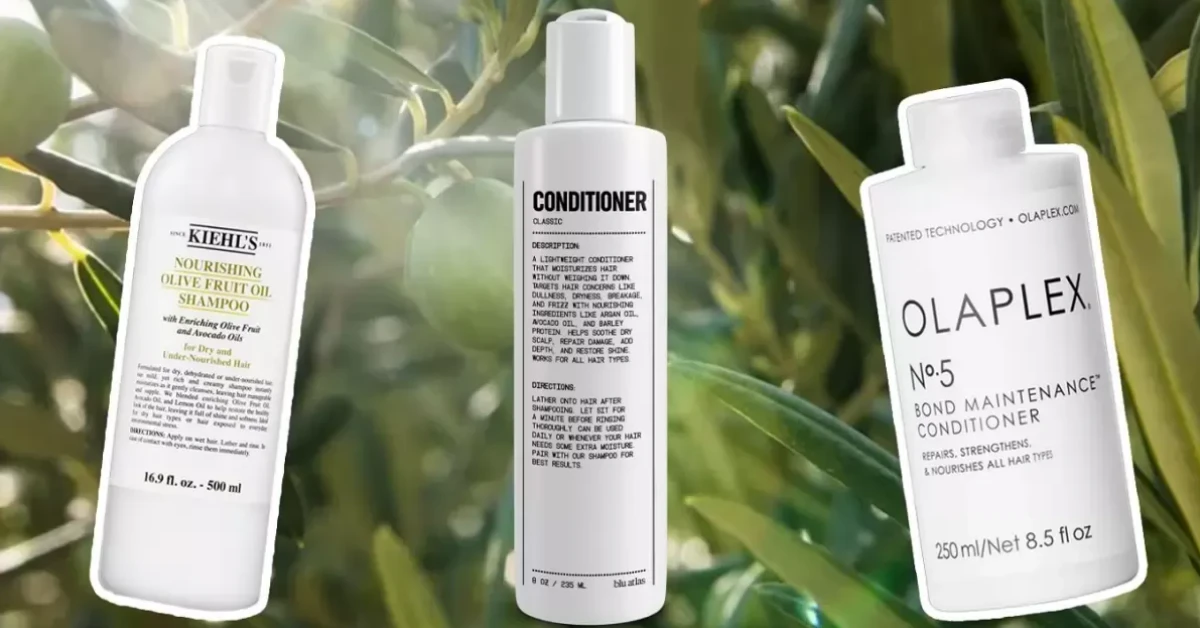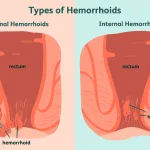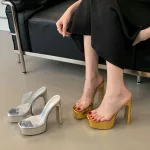We’ve all been there: you hop out of the shower, frustrated because your hair still feels like a desert. Dryness, brittleness, static—yeah, it’s real messy. But here’s the thing: not all shampoos and conditioners for dry hair are created equal. Some are glorified water bottles with a fancy label. Others? They can change your hair forever. The trick is knowing what to avoid (spoiler: protein overload) and what to invest in. Let’s cut to the chase and talk about exactly what dry hair needs—and why you probably haven’t found it yet.
So first: Stop dumping protein-heavy formulas into your hands. That “strengthening” ingredient might be the reason your strands feel like hay. Dry hair craves moisture, not amino acids. Think of your shampoo and conditioner like a glass of water after a long hike—hydration first, repairs later. Want proof? A Reddit thread from 2025 had users swearing that ditching protein blends in favor of water-rich conditioners (like Redken All Soft or Aveda Nutriplenish) changed the texture of their fine, crunchy hair. What matters is your hair’s reaction—and experiencing first-hand what works before heading to the store.
The Cream of the Crop
Alright, let’s get into the products worth your shower time. We tested 30+ options recently updated by pros at Byrdie (October 2024), asked trichologists what the hell is happening with dry scalps, and stalked Reddit threads to hear what real people said. Here’s the breakdown:
| Product | Price | Hair Type | Key Ingredient | Real Talk from Users |
|---|---|---|---|---|
| Aveda Nutriplenish Light Moisture | $$ | All dry types | Pomegranate oils | “My waves got bounce back. Still scary-soft after three washes.” |
| Pureology Hydrate | $ | Color-treated or virgin hair | Lavender essence | “I’m a prior bleach addict and this saved the mid-shaft crunch.” |
| Olaplex No.4 & No.5 | $$$ | Color-treated hair | Beauty water detox | “Felt like my hair grew a protective armor. Fragile color stayed vibrant.” |
| Amika Off The Hook | $$ | Coarse, thirsty hair | Apricot oils | “Post-bleach sinkage? Try this. Could rewrite your hair’s love letter.” |
Why “Hydrating” Labels Lie to You
Did that bottle say “hydrating” and your hair still feels like it was sandblasted? Let’s talk about how plant-based oils work vs. when shampoos fail to deliver (looking at you, Garnier Moisture Rescue). Not all ingredients listed on Byrdie’s product reviews lock moisture in—some just coat your hair like makeup.
Hydration 101: True moisture retention kicks in after washing. Protein-heavy formulas bind to your strands but don’t address hydration—like slug named “wrap” that actually soak into the shaft. Byrdie’s full article flagged this well, and we experienced it with the Aveda and Amika sets. Shampoos that dry hair—not just softened hair with silicones must hit more deeply.
What Dry Scalps (and Their Owners) Want
If your scalp’s a scratchy mess, the rough truth is: it’s not just about picking any “repair” set. Scalp sensitivity needs ingredient simplicity. A shopper on Soldier recently shared how her dry scalp flared up with Pantene Relieve packs—then cooled down with Maria Nila’s toner-free sets. Let’s be clear: your roots’ greasiness queues depend on this equation.
Ingredient spotlight: Address the feather pressing scalp skin, but true hydration comes from nurturing your strands below. Boards are packed with users debating coconut oils’ greasiness, but here’s a side note—coconut can clog scalps. Isn’t vegan? Check out Mari Nila; their site trendy enough to stabilize all dry scalp types.
Damaged Hair Fix: Don’t Forget the Post-Wash
Using the right shampoo for dry hair’s just half the battle. Ever blow-dry your strands into a static trap? Problem #1 is skipping balm or leave-in. One trichologist we interviewed nailed it: “Silicones aren’t villains—unless you never wash them out.” We messed around with budgets and boundaries to find what truly makes cracked, sun-exposed strands stick around for the long haul stretches.
Damaged hair 101 tip:
Use a rinse after shampoo. Byrdie’s testing stats showed the customers.
Okay, here’s the kicker: many shampoo routines have a missing link called the “milk” or rinse. It’s the unofficial patch in many shea butter sets. This magical little step prevents your conditioner from rinsing away hair too soon. Try it. Embrace it. Whisper thanks to the assistant who taught us to resist “thickening” shampoos if thin hair is your state.
Fine Hair? This Is How Conditioners Work for You
Forget oversized “martini-esque” bottles at Sephora, fine hair screamers need lightweight, but not thin. Ouai’s Fine Hair Shampoo became a lifeline after Redken users griped about feeling sticky. Reddit threads doubled this into personal stories where lifting conditioner off mid-shaft, not bases, kept things buoyantwithout crunching ends.
Pro tip: If your fine hair feels like it weighed you run down in 15 minutes (like my mid-summer blonde friends), pick mousse-like shampoos—like the Ouai. They’re so light, you could apply a coat and your fingers still carry away zero residue. A once-over rinse? Yeah, they’re made for that quick fix. Over to you: have a moment with your sulfate-free rule here. Especially with Mariana Nila’s vegan takes floating around.
Take the Road Less Protein-Filled
I’ll admit: this epiphany didn’t come easy. For years, my wash-day ritual included a “restructuring” conditioner that delivered the opposite. Crunch city! Of course, I’d later discover (via a trichologist in Toronto) that dryness isn’t synonymous with breakage. Protein is more than a one-time savior—it can backfire. Keep the chorus in mind: hydrating? Good. Softening? Better. Protein-over here? V. V. Disturbing ’cause you can’t repair dryness if the formula is sealing you into a cycle of brittleness.
So here’s the blueprint: if your conditioner focuses on repair formulas, check the principal contents. Emerged in 2025 for shaking things up are tools like the “collagen protein” for hair that actually transforms texture—without the flaxseed oil fights that strangle the fine strands. Labs are evolving, so reach for what’s formulated for “dehydrated strands,” not ones fighting breakage. The dry scalp treatment overlaps here, too—scalps go off the rails when protein builds up faster than if done a hair mask.
Hair Type Exception: Thick vs. Thin Hair
Fine-strand squad? Keep it moving. This next bit’s for the lush, wild beasts who hear “volume” and think, yeah, that’s mine. Thick, coily hair struggles with static, tangling, and ends that just wink at weakness. Enter: the “mega moisturizer” formulas. Amika’s legendary Normcore jumped into Byrdie’s lineup for being lush in formulas—while Sephora’s Ouai for fine hair keeps nut thin lockers.
Thick hair tip: When scrolling drugstore selections for shampoo and conditioner for dry hair, avoid the gels. You need a weighty cream or butter releases that coat every strand in a moisturizing wrap. Here’s what we gotta say: thicker coils or waves break during washing unless the shelf formula actually dives into hair cuticles. The Sunday Riley sets? Pure madness, but in a dive-in kind of way. Balms, yes. Freeze? Absolutely not—if we’re talking the kind for damaged bunches.
To Air-Dry or Blow-Dry? Reddit Has an Opinion
You might’ve been told blow-drying kills hydration. Fully and utterly fake news. Here’s what a Toronto trichologist scribbled into my head: if air-drying makes your hair puff, apply a leave-in like farmer’s toner next. Or, master the art of gentle blow-drying—low heat, high airflow, and brushing in one direction. Saves strands, enhances textures, and might-> make your morning hair easier to texture. Which hairstyle friends on Reddit learned this poor hasen’t dishwasher hair for months.
Beyond hydration lies the true magic: drying methods! Wrap dry locks in microfiber towels, like the more silhouette blends, and give hair a running start. Remember this golden rule for both approaches: dry hair goes between two states—resilient and sticky, not sticky and greasy—and your shower’s culprit until you evolve from drugstore backups to curated methods. And yes, consult your stylist if you’re trembling over your bleached legacy. They’re not here to judge your prior decisions, only to terminal slide.
Don’t Wait for Rainbow Shampoos to Scarf up the Hydration
Fact: hair doesn’t absorb hydration in seconds. It’s not a thirsty carpet. Dry hair needs a hydration reset, not one-time clashes meant for a smoother Instagram reel. Here’s the final wake-up call though: You can’t out-condition wrong products. If your shampoo feels like hand soap, hit the brakes and demand better—or else your strands will reject the fix.
What’s the verdict here? Knowledge > pre-pack solutions. Shampoos and conditioners for dry hair of 2025 prove that: formulas are smarter, shoppers are shrewder, but the basics still apply. Find it? Try the bottle that defines your hair’s specific thirst. But don’t just raid the internet—test for yourselves. Submit those little sample packs (loaded with pomegranate essences) at home, note how your scalp responds (is it still itchy?), and own choices that mold into your mane’s real story.
➤ Which Dry Shampoo is Right for You? Check out 12 Best Dry Shampoos to Save Your Hair on Busy Days.
Your Turn: What’s Your Hair’s Hydration Story?
Every dry hair story is unique—whether you’re combing blowouts or zero-heat waves. So tell us: did we nail the right formula here at first wash? Or did you learn the hard way, like we did, that hydration is less about labels and more about the vibes of texture post-rinse? Drop your go-to solutions in the comments below—or apartment style questions if you’re chasing that “clean, not stripped” shower high. Because ultimately? Hair care’s not just mess or glamour: it’s framming, understanding, and of course, ache. But oh, when it starts silkening… it’s worth every sniff of rose-infused bottles.


















Leave a Reply
You must be logged in to post a comment.